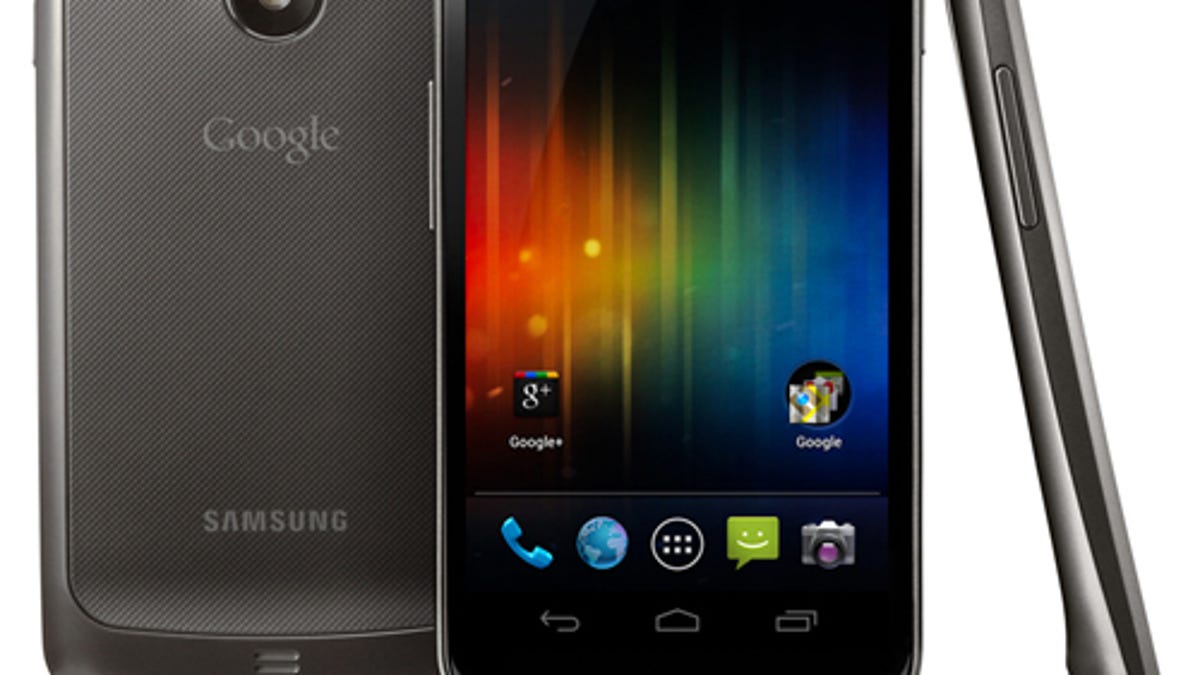Android 4.0 arrives as Galaxy Nexus goes on sale
With Samsung's Galaxy Nexus now on sale in the U.K., the Ice Cream Sandwich version of Google's mobile OS moves from promise to reality.

Samsung's Galaxy Nexus, the first phone with Google's Ice Cream Sandwich version of Android, has gone on sale in the United Kingdom.
The phone--a dual-core model that retains the curved-glass look of Samsung's earlier Nexus S phone--is a flagship device in a crowded Android market. It went on sale today at Phones4U in the U.K. and will arrive at Vodafone, 3, and O2 stores "in coming days," according to a Google Nexus tweet today.
And Samsung UK posted a photo of the "world's first Galaxy Nexus owner."
Specifications don't matter anymore, we are told, but for those who might be interested, here are some: a super AMOLED 720p screen measuring 4.65 inches diagonally, a dual-core 1.2GHz processor; 1GB of memory; LTE or Pentaband HSPA+ wireless networking depending on the market where it's being sold; a 5-megapixel camera with low-light shooting abilities and "zero shutter lag," and supporting 1080p video; a 1.3-megapixel front-facing camera for video chat; front and rear speakers; an accelerometer, gyroscope, compass, and barometer; and a 1750mAh battery. The version sold in the UK is 135.5mm tall, 67.94mm wide, and is as thin as 8.94mm, and it weighs 135g.
The model is the third in the lineage of Nexus phones. First came the Nexus One, built by HTC and initially sold directly by Google in an attempt to sidestep the dominant carrier-subsidy approach to selling phones. Google dropped the effort, eventually aiming the phone just at developers.
But the Nexus brand lives on in a different form, a signal of the phone that Google has anointed to show off new features. With the Nexus S, built by Samsung, it was near-field communications (NFC). That lets devices in close proximity communicate; the highest-profile use is making a purchase by waving a phone near a payment station.
With the Galaxy Nexus, the standout feature is Ice Cream Sandwich.
Most phones today come with Android 2.x (including Eclair, Froyo, and Gingerbread versions), but Google hastily shipped 3.x (Honeycomb) to try to secure a beachhead in the tablet market. Honeycomb was for tablets only, though, and Google never released the Honeycomb source code in an easily digestible form. With Ice Cream Sandwich, a single version of Android version will span tablets and phones.
To showcase those features, Google published a Google Nexus site with a slick scrolling interface. In a glaring oversight, though, the top of the screen reads "Galaxy Nexu" rather than "Galaxy Nexus," though, and the Web page changed to a more traditional design midmorning.
Among the high-profile Ice Cream Sandwich features are face recognition to unlock the phone, "voice typing" that transcribes speech to text as you talk, Android beam to exchange Web addresses, YouTube videos, or contact information by NFC.
It's not clear yet which among existing Android phones will get Android 4.0. Samsung resolved one uncertainty yesterday, saying its Galaxy II S will get Ice Cream Sandwich but declining to say when. Bringing Android updates to the market has proved a major challenge, with Google, handset makers, and carriers all being involved. It's complicated in the common cases in which the standard Android user interface has modifications to help it stand out.
The Galaxy Nexus, though, is the "pure Google" Android interface, and Samsung promises that "users will be the first to receive software upgrades as they become available." That's something of a sad commentary compared to Apple's world, in which iOS updates arrive for all but relatively elderly devices.
Another striking difference between the Android and iOS realms is the amount of choice. Android phones cover a broad spectrum of prices and capabilities. That's great for tackling specific markets--those who want hardware keyboards, say, or large screens--but it also means customers face a daunting array of options.
Even narrowing things down to a flagship Android phone can be tough. The Galaxy Nexus is a definite contender, along with the HTC Rezound and Motorola Droid Razr. Both those other models are upgradeable to Ice Cream Sandwich.
It's also not yet clear when the Galaxy Nexus will arrive in other markets, but late November seems possible for Verizon in the United States.
Updated 2:24 a.m. PT and 3:56 a.m. PT with further details about the phone.

